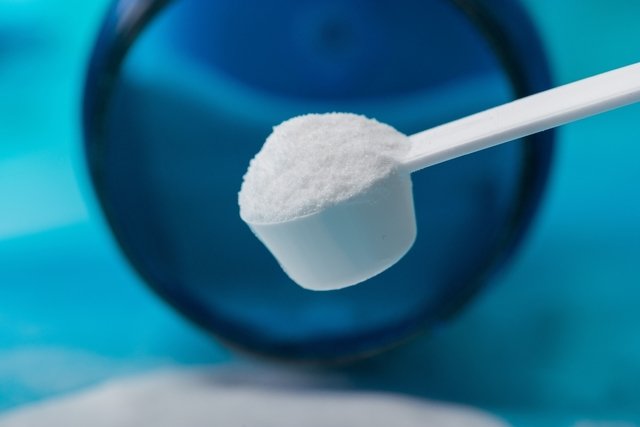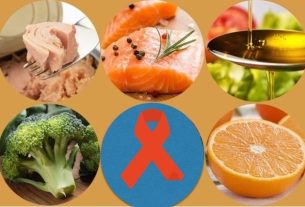Dextrose is a simple carbohydrate that is converted into glucose and quickly absorbed by the body, making it highly recommended as a dietary supplement to improve performance and promote muscle mass gain in athletes and those involved in high-intensity physical activity.
In addition, dextrose is also used to sweeten processed foods and, in the hospital environment, to avoid treating hypoglycemia, a condition where blood sugar levels are very low, causing dizziness, mental confusion and fainting. Understand more about how hypoglycemia happens.
Dextrose is sold in food supplement stores and pharmacies and can be used during or immediately after training, diluted in water, alone or together with other supplements, such as BCAA and whey protein.

What is it for
The main indications for dextrose are:
1. Improve physical performance
Dextrose improves physical performance as it is a simple carbohydrate that is quickly absorbed by the body, increasing energy during high-intensity training, such as weight lifting, Crossfit and high-intensity interval training (HIIT).
2. Promote muscle mass gain
By quickly providing energy to the body, dextrose improves physical performance during training, favoring the gain of muscle mass. Check out other supplements recommended for gaining muscle mass.
Furthermore, when used immediately after training, dextrose also provides energy to the muscles, helping with recovery and the formation of muscle mass.
3. Avoid loss of lean mass
Dextrose prevents the loss of lean mass, known as catabolism, in people who consume few carbohydrates and/or who exercise at high intensity for long periods. This is because in the absence of glucose in the body, this carbohydrate can be obtained through the muscles, which are transformed into amino acids and converted into glucose.
4. Treat hypoglycemia
Dextrose is used in a hospital setting, in the form of gel or solutions, which are administered intravenously, to increase blood sugar levels, helping to treat hypoglycemia.
5. Avoid malnutrition
Dextrose is used, together with amino acids and fats, to prevent malnutrition, through parenteral nutrition, a method of administering nutrients directly into the vein, indicated when the person is unable to obtain nutrients through oral intake. Learn more about parenteral nutrition.
6. Sweeten foods
Dextrose is used by the food industry to sweeten foods, such as cakes, ice cream and yogurt, and is also used to neutralize spicy or salty flavors and to extend the shelf life of foods.
Types of dextrose
There are two types of dextrose, monohydrate, which is mainly used as a food supplement, in powder form, or as a sweetener and preservative in processed foods.
Anhydrous dextrose is mainly used in medicine, in the form of intravenous solutions, gels and tablets, to combat hypoglycemia or to provide energy to people who cannot eat orally.
Difference of dextrose and maltodextrin
Maltodextrin is a carbohydrate that is quickly absorbed by the body, and is indicated to improve physical performance and promote muscle mass gain in those who practice high-resistance activities, such as football or running, or strength training, such as bodybuilding and calisthenics. Learn more about maltodextrin.
While dextrose is a simple carbohydrate that is quickly converted into glucose and absorbed by the body, it is generally recommended to promote the recovery of those who practice intense exercise, such as weight lifting and high-intensity interval training (HIIT).
How to drink
It is generally advised to take a dextrose supplement during or immediately after training. The amount of dextrose normally indicated is 30 grams, which must be diluted in 200 to 300 ml of water or another drink.
Dextrose can also be consumed together with other foods rich in protein, such as meat, chicken or eggs, or with protein supplements, such as BCAA or whey protein, to help gain muscle mass.
Dextrose, in the form of intravenous solutions, gels and tablets, should only be used as directed by a doctor and in a hospital environment.
Does dextrose make you fat?
Because it has a high glycemic index, dextrose is a simple carbohydrate that can make you fat by contributing to the accumulation of body fat, especially when consumed by people who do not practice physical activity and/or maintain an inadequate diet.
Possible side effects
Excessive consumption of dextrose can cause diarrhea, abdominal cramps, nausea, excess gas, as well as promoting weight gain, insulin resistance and the onset of diabetes.
Intravenous dextrose solutions can cause increased blood glucose levels, pain and allergic reactions at the application site, thrombosis or thrombophlebitis.
Who cannot consume
People who are allergic to corn should not consume dextrose. Furthermore, pregnant or breastfeeding women, the elderly, children and people with diabetes or other health problems should always consult a doctor or nutritionist before using dextrose.

Sign up for our newsletter and stay up to date with exclusive news
that can transform your routine!
Warning: Undefined array key "title" in /home/storelat/public_html/wp-content/plugins/link-whisper-premium/templates/frontend/related-posts.php on line 12
Warning: Undefined array key "title_tag" in /home/storelat/public_html/wp-content/plugins/link-whisper-premium/templates/frontend/related-posts.php on line 13



